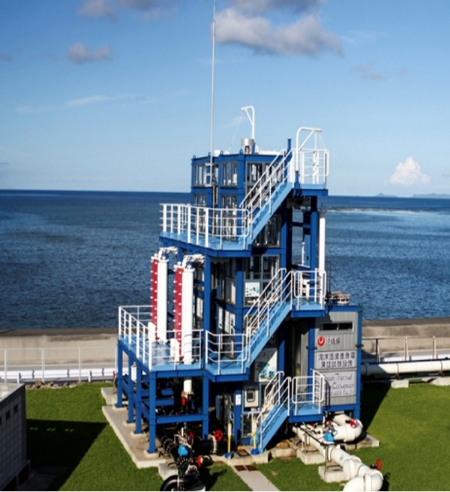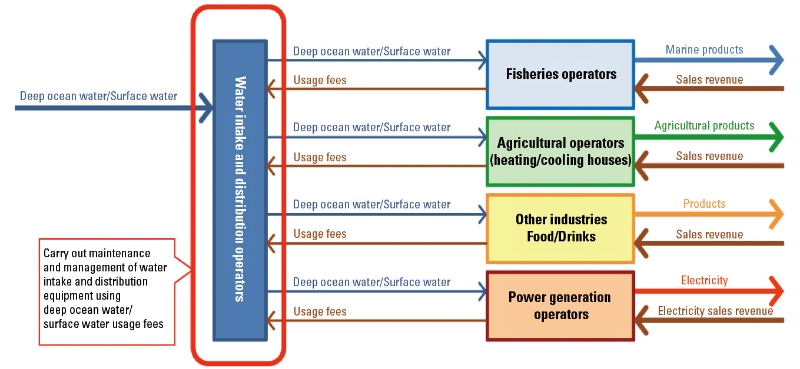Ocean Newsletter
No.564 February 5, 2024
-
Current Laws and Policies for the Promotion of Remote Islands
MIKI Tsuyoshi (Director, Research Department, Center for Research and Promotion of Japanese Islands)
The Remote Islands Promotion Law and other related laws have promoted the development of Japan's remote islands, focusing on social capital development. In recent years, however, emphasis has been placed on soft support measures, and the 8th Remote Islands Promotion Plan starting in FY2023 clarifies various considerations to address today's issues. In order for remote islands to fulfill diverse and important roles, such as preservation of territory and the exclusive economic zone, sustainable development is required, such as through improving the unfavorable conditions of the living environment and expanding employment opportunities.
-
The Future of Remote Island Medical Care
MAEDA Takahiro (Islands Medical Research institute, Nagasaki University / Professor, Department of General Medicine, Nagasaki University Hospital)
Remote island medical care in Japan varies depending on the size of the population and location of the remote islands. As the population declines and ages rapidly and local community functions decline, efforts are underway to build an efficient healthcare delivery system by introducing new technologies such as telemedicine and drone logistics, while at the same time maintaining existing healthcare services. Progress must be made in pursuit of a balance between convenience and safety, while keeping in mind overall health care over a wide area.
-
A Japanese Version of the “Green Transformation (GX) Island Model” Centered on Ocean Thermal Energy Conversion
IKEGAMI Yasuyuki (Professor and Director, Institute of Ocean Energy, Saga University*¹)
The “Kumejima Model” is based on the composite utilization of deep ocean water centered on ocean thermal energy conversion, for which empirical research was successfully conducted in 2013 on Kumejima, Okinawa Prefecture. This model has been attracting attention in the international community, including at the COP28 held in 2023. This paper provides an overview of the current situation and outlook for ocean thermal energy conversion and the utilization of deep ocean water.
A Japanese Version of the “Green Transformation (GX) Island Model” Centered on Ocean Thermal Energy Conversion
Toward a Global “KUMEJIMA MODEL”
The “Kumejima Model” is a “carbon-neutral and sustainable green transformation (GX) social model for advanced island regions,” which aims to transform energy, water, food, and employment. In recent years, it has also been introduced as one of the representative “GX Island Models” in the International Energy Agency (IEA), International Renewable Energy Agency (IRENA), and United Nations Industrial Development Organization (UNIDO). Moreover, it has been drawing attention for its ability to make island regions more resilient against natural disasters. In 2000, deep ocean water intake pipes were installed at a depth of approximately 600m in the waters of Kumejima, and in 2013 the world’s first OTEC demonstration test using cold deep ocean water was successfully conducted here (Figure 1). Sugarcane production had been the largest industry of Kumejima Town before the installation of the water intake pipes, but the scale of the deep ocean water utilization industry has now expanded to about 2.5 times that of the sugarcane industry. On the other hand, with growing need for sea water in recent years, Kumejima Town is conducting feasibility studies for the installation of new water intake pipes with government support, aimed at increasing water intake by about 10 times from FY2021.
The effectiveness and results of such deep ocean water utilization have been recognized. In the Fourth Basic Plan on Ocean Policy approved by the Cabinet in 2023, “industrial promotion utilizing regional resources such as deep ocean water, amid the expanding industrial use of the oceans,” was set out as a measure related to the Cabinet Office and the Ministry of Economy, Trade and Industry (METI). The “Kumejima Model” is widely recognized as a Japanese version of the “GX Island Model,” and there are high expectations of it from the international community. However, it faces significant challenges including the early demonstration of 1MW-class small-scale OTEC, and building support for it as a form of public infrastructure for deep ocean water intake pipes.

■ Figure 1: OTEC demonstration plant in Kumejima, Okinawa Prefecture
Transforming Deep Ocean Water into Public Infrastructure for Island Regions
Deep ocean water has many useful characteristics compared to surface water, such as stable and low temperatures, rich nutrients, purity, and stable water quality. Regarded as the “eighth ocean” after the seven seas of the world, it is attracting global attention from the perspectives of blue economy and SDGs. Among these, there are high expectations for the following.
・Effect of promoting carbon-free industries through the secondary use of deep ocean water after utilization in OTEC
・Promotion of primary industries through OTEC (toward an industry that is free of energy-derived CO2 emissions)
・Saving energy (90% or more) in air-conditioners, data centers, etc. through highly efficient cold heat utilization
・Risk hedging against the food and protein crisis, which has become a growing concern due to climate change
・Promoting compact (10MW-scale, 1/100 of solar power generation) renewable energy use in island regions
・Recovery of scarce resources from sea water, such as lithium
・Conservation of marine resources, and conservation/cultivation of corals, through the promotion of fisheries cultivation
・Local production for local consumption in tropical, subtropical, and island regions: Reducing GHG emissions by reducing food mileage
・Direct carbon fixation through algal growth and use
・Utilization in regional education and environmental education for future generations
Hence, deep ocean water has the potential to bring about GX and resolve many social issues. However, as the cost of water intake pipe installation is a significant bottleneck, discussions are now ongoing in the international community concerning the social implementation of water intake pipes as public infrastructure in island regions (Figure 2). They are a form of infrastructure that is operated over the long-term at the beneficiary's expense, such as water and sewage systems, expressways, and communication networks. In fact, on Kumejima, the usage fees for deep ocean water are paid for by the seagrape, kuruma prawn, and cosmetics industries. It is hoped that these will become world-leading concepts as the Japanese version of GX models.

■ Figure 2: Public infrastructure for deep ocean water intake pipes to promote the “GX Island Model”
Expectations of OTEC as a Purely Domestic Form of Renewable Energy
OTEC is a power generation system that converts thermal energy stored as the temperature difference of approximately 15°C to 25°C between warm sea water on the surface of the ocean and cold sea water at about 600m to 1,000m in the depths of the ocean, into electrical energy. This temperature difference remains stable throughout the day, so OTEC is anticipated to fulfill the role of baseload power source or demand response capacity*3 in renewable energy systems. It is evaluated to be economically viable if the temperature difference is 20°C or more, and more than 50 countries, particularly in the equatorial regions, have strong potential for the deployment of OTEC facilities. OTEC also has competitive LCA (life cycle assessment, which is the environmental impact across the entire life cycle from resource to disposal/recycling); the energy payback time*4 for a 100MW-class OTEC facility is assessed to be 0.43 years for floating facilities and 0.5 years for onshore facilities, while that for an onshore 1MW-class OTEC facility is assessed to be 1.86 years.
Around 1990, it was said that OTEC was technologically feasible but not economically viable. Subsequently, as a result of research and development carried out in Japan with the support of many relevant organizations, onshore 1MW-class facilities were evaluated to have reached the commercial phase, and sufficient progress has been achieved to aim for commercialization led by the private sector. Today, OTEC technology is a purely domestic form of renewable energy technology in which Japan boasts international competitiveness. In particular, Japan leads the world in the performance of its elemental technologies, its track record of demonstrations, and in intellectual assets such as patents, etc.
OTEC demonstration projects and commercialization are currently also being promoted in other countries, including Europe, the U.S., South Korea, and China. Amid these circumstances, Japan is expected, both by the domestic and international communities, to be the first in the world to carry out the full-scale development of the “Kumejima Model” alongside demonstration research on onshore 1MW-class facilities. On the other hand, JICA and other organizations are considering the potential for the international expansion and contribution of such models to island states in the Asia Pacific and other regions.
OTEC also possesses superior functionality in areas such as resilience of remote islands, development of sustainable societies, and conservation of remote islands such as Okinotori-shima and Minamitorishima as a way of advancing Japan’s national interests.
2023 is a milestone year marking 50 years since the launch of OTEC at Saga University. This year will become the first year of OTEC’s “international contribution” as a purely domestic technology from Japan, and it is hoped that it will be promoted through nationwide efforts to reach a new stage of international contribution in the next 50 years. (End)
*2 https://sidsdock.org/sids-dock-press-release-a7apr0032023/
*3 To strike a balance between electricity demand and supply by controlling power usage on the consumer’s end
*4 The amount of time it takes for a power generation facility to offset itself by the amount of energy it consumes over its entire lifecycle
